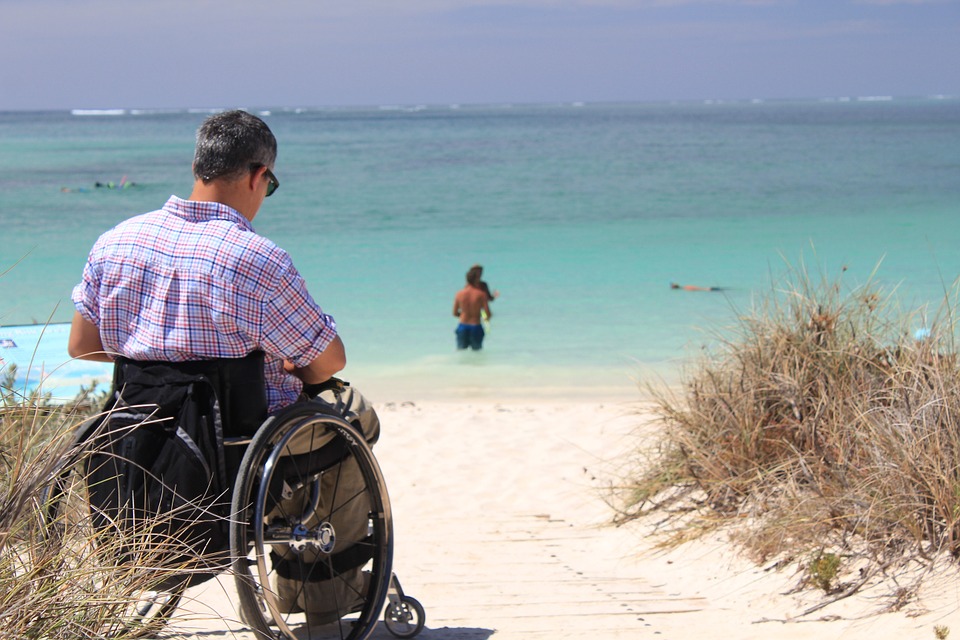2019 Jun 20
People who suffer from quadriplegia face a number of difficulties in their day-to-day activities that, without help, make their lives a continuous struggle to get done even the simplest of things.
Nevertheless, in our days we can find a vast array of assistive devices that can ease these difficulties. In this article we aim to list some examples.
There are many fields where these solutions are being engineered and taken to market. Too many, in fact, to be completely detailed in one single post.
In this article we aim to list some examples, in the areas of kitchen aids, toothbrushes, swimming assistance and hands-free access to smartphones, just to give an idea of the different fields where assistive devices can provide a solution to the most pressing needs of quadriplegics.
These devices, no doubt, may not suit everyone with quadriplegia, and they range from the cheap to the expensive and from the simple to the complex. So, a previous research is usually needed to find, compare and test the best assistive devices to help someone with reduced mobility.
Kitchen aids
There are a number of assistive devices in the market that can help quadriplegics with their eating.
Handcuffs, or clips, are assistive devices to hold utensils that can be adjusted to meet each user’s particular condition, hand size and the shape of the utensil. They help the user to hold eating utensils (other instruments too, like a toothbrush), are easy to use and very useful for people that struggle with hand control.
Wrist support are assistive devices that allow people with quadriplegia to hold the hand in extension to support a weak wrist. Eating utensils (also writing instruments, for example) are then fixed to this wrist support to assist with daily functions. Some of the wrist support designs are full braces while others are similar to splints.
Robotic feeding arm devices are assistive devices designed to suit children and adults with muscular weakness, upper limb function loss or quadriplegia. They can be used by anyone who has the cognitive ability to operate a simple machine and is able to operate accessibility switches with their head, shoulders, arms, legs or feet.
Hands-Free Toothbrushes for Quadriplegics
Toothbrushes for quadriplegics are assistive devices that have made big advances in recent years, producing “hands-free” toothbrushes that are perfectly suited for people with quadriplegia, as no hands at all are required with the new designs.
They have BASS technology, which is high vibration frequencies that remove nearly all bacteria and plaque from the teeth, as well as a U-shaped design.
And let’s not forget that the electric toothbrush was invented for quadriplegics in the 1970s and then became mass produced for everybody else.
Assistive Devices to Help Quadriplegics Swim
There are several swimming assistive devices available that can help people with quadriplegia swim. Here are several ones that you may consider:
Portable pool lift, pool pod or pool hoist are assistive devices designed to help get the quadriplegics into the pool. This may be the first thing needed for quadriplegics with high level injury.
Flotation suits: for those quadriplegics with a lower level injury and who want to swim without any assistance, a complete floating suit may be their best option.
Flotation collars: these devices are positioned around the neck. This way it is assured that the head will always be above the water. These assistive devices are needed for anyone that can’t use their arms. But also many people with limited arm movement prefer using them when swimming. Besides helping many people relax, it can also help them begin to use their arms in the water.
Float chairs are cheap and easy to transport, store and use. A float chair made from flotation noodles can be a good option to rest in the water and have some mobility for arms and legs.
Hands-free smartphones
Mobile devices are the ultimate assistive devices for everybody. For people with quadriplegia, there are solutions that may minimize the need to operate them via their touch screens.
Our article about hands free phones for disabled people lists several options. For quadriplegics the best one is probably to use switches.
A switch is an assistive device that behaves like a button. It has many shapes and sizes and it can be activated with any part of the body where the user keeps controlled movement: the back of the head, the chin, the foot, a finger, the knee, etc. Just by clicking the switch, the user can access any functionality in her smartphone and use any installed app.
Both Android Switch Access and iOS Switch Control support switches.
There are companies like us, Mouse4all, and Tecla that build apps and assistive technology devices to improve the off-the-shelf switch support of Android and iOS.
Computers with eye tracking technology
This technology follows a user’s gaze on her computer screen, allowing her to select, scroll, zoom and perform other mouse functions.
Communication boards equipped with eye tracking technology require users to briefly focus their gaze on particular images, selecting them to communicate words and sentences. In combination with other programs, eye tracking can be used for dictation, phone calls, text and email, social media and playing games.
Wearable robotics
Wearable robotics may be still in their infant stages, but we can already see some preliminary products like hand and arm devices that can be used to facilitate movement in the extremities of people with quadriplegia.
These assistive devices for upper extremities aim to provide gripping, stability, and strength to limbs that lack control or motor functions.
They will probably a game-changer due to its versatility and adaptability. They will provide multipurpose functionality and be of invaluable help in many daily routines.


